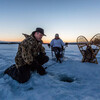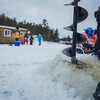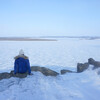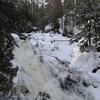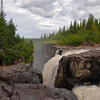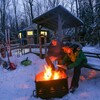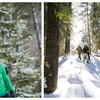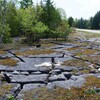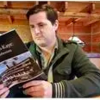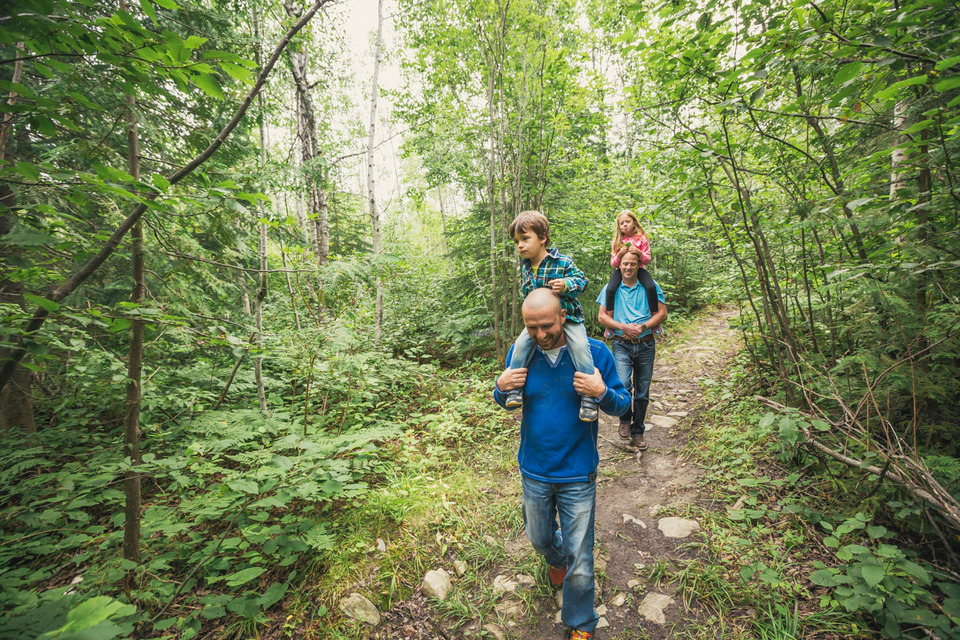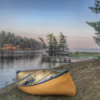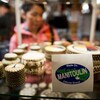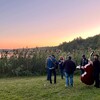
This Small Ontario Museum Tells a Big Story
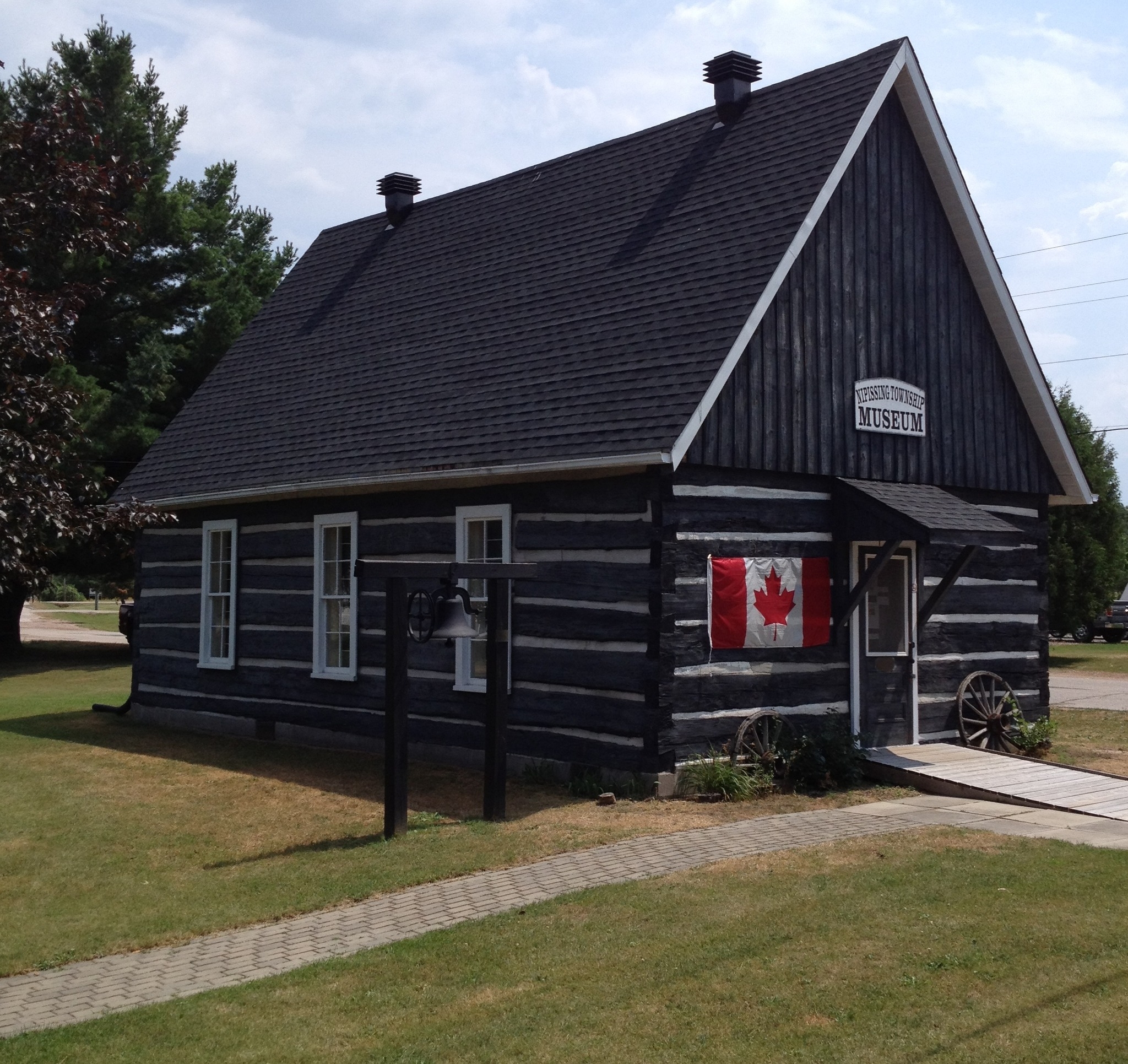
On my first visit to Nipissing, Ontario some years ago, I remember being immersed in the varied exhibits and artifacts of the village’s log-hewn museum. For a township of less than 2,000 people, the museum is particularly impressive—a testament to communal pride and the rich history of this northern Parry Sound District community. I’ve been long awaiting an opportunity to return.
There’s no better time to rediscover this museum or discover it for the first time, as it celebrates its 50th anniversary this summer.
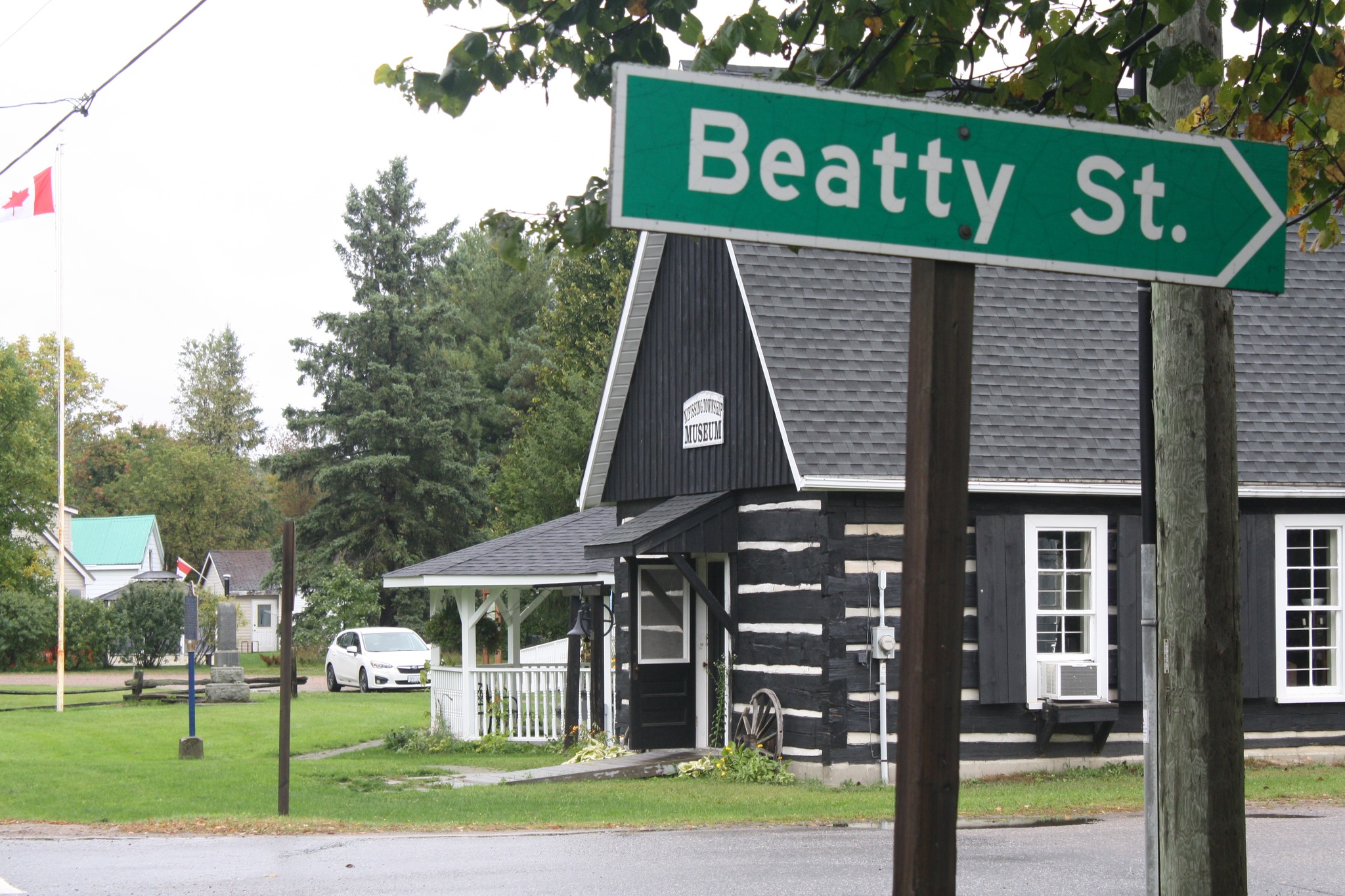
About Nipissing, Ontario
Nipissing is a small community, but for a time—a brief time—it was a big deal.
The village of Nipissing traces its roots back to 1862 with the arrival of John and Elizabeth Beatty, who settled land in what was then still a wilderness region. For a time, the Beattys were alone, but soon other homesteaders began to arrive on their heels—the Lloyds, Thomases, Chapmans, Armstrongs, Rowlandsons, and others. These settlers and all supplies came along the same route followed by the Beatty family—along the Ottawa and Mattawa Rivers, portaging across to Lake Nipissing, and then up the South River. The community of Nipissing became the nexus for settlers and goods spreading out throughout the township and its environs and began to grow rapidly.
Nipissing got an even more significant boost to its fortunes with the opening of the Nipissing Colonization Road. One of twenty-five such roads built in the government’s effort to open the rocky Canadian Shield to settler farmsteads, the Nipissing Road was cut through the dense wilderness of Parry Sound District from Lake Rosseau in the south to the village of Nipissing in the north. Construction began at the south end in 1864. A decade later the road was complete and passable by wheeled vehicles over its entire length. With the opening of the Nipissing Road more people and goods than ever before passed through the village of Nipissing, bringing prosperity and prominence.
At the time, Nipissing boasted a sawmill, two general stores, a pair of hotels, a blacksmith shop, school, grist mill and a wagon shop. People were so confident of a bright future that a townsite was mapped out.
Unfortunately, fate had other things in store and the village’s time in the sun would prove fleeting. In 1896, rail lines were extended from Huntsville to Callander on Lake Nipissing. With the coming of trains, traffic along the Nipissing Road—the very foundation of Nipissing’s prosperity—began to wither away. Nipissing became a bit of a backwater, quieter than before but its people no less resolute in their desire to make the most of the land.
The surprisingly rich history of the village—its heyday, naturally, but also the years since—is preserved and shared within the Nipissing Museum, established in 1974 to commemorate the 100th anniversary of the Nipissing Road.
The Nipissing Museum Complex
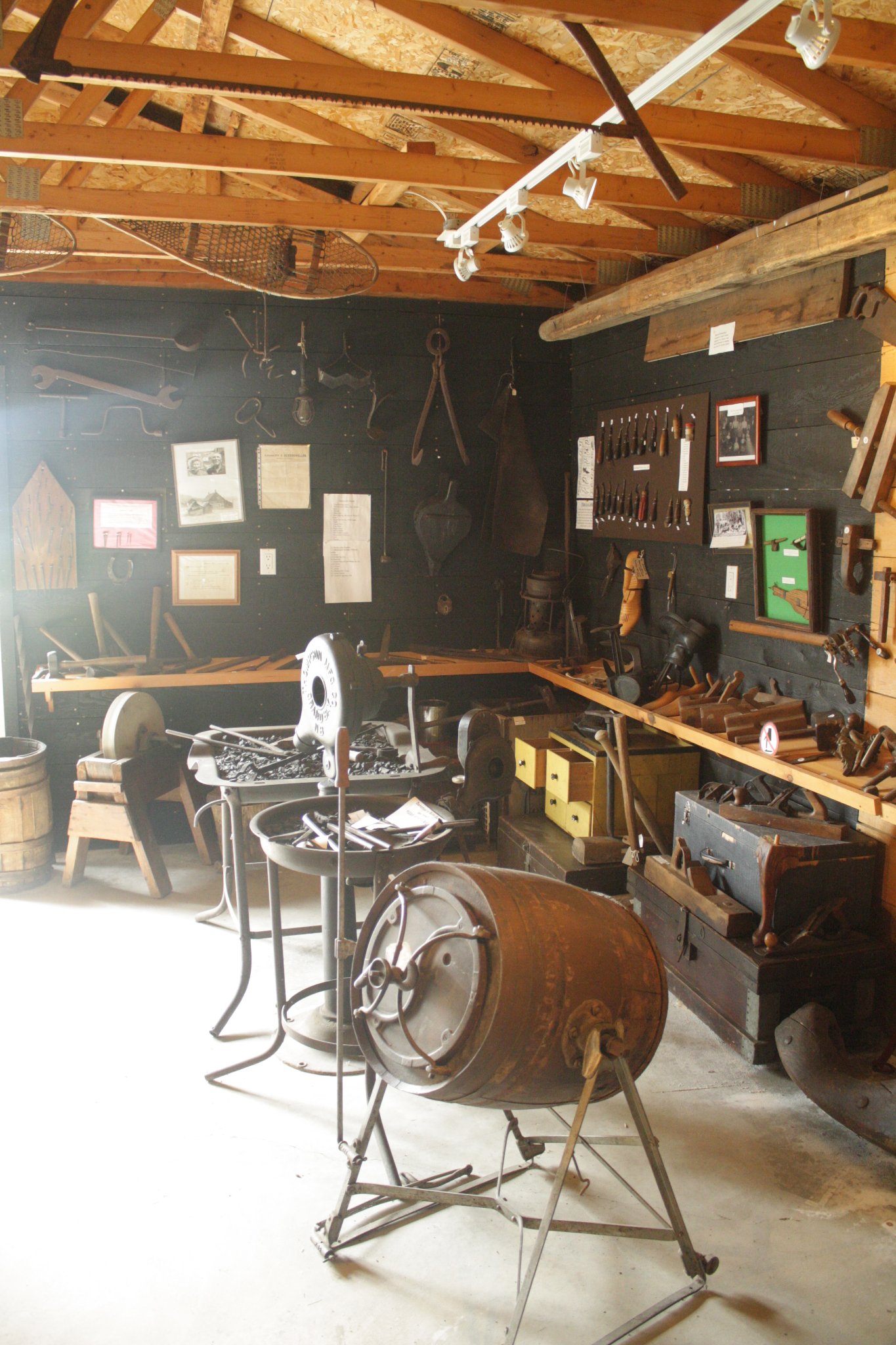

The Nipissing Township Museum is a complex of three buildings.
One, known as the Hardware Store, was built about 25 years ago. It serves as a venue for demonstrating early skills and as additional exhibit space, especially for agricultural implements and tools.
The focus of attention for youngsters and those with a sweet tooth is the Old-Fashioned Candy Shoppe, which opened in 2017. Stepping through the door is like stepping into a general store of the past, complete with antique register and smiling proprietors dressed in period costume. The shelves of this particular mercantile are stocked with all manner of retro candy, including candy sticks in a dozen flavours, jellybeans, licorice, boxes of candied popcorn, sinfully good toffee, and many more besides.
The museum and its collection of exhibits are housed within a log church. At more than a century old, the church is an artifact in its own right. Religion played such an integral role in their lives that as soon as Nipissing’s settlers had established their wilderness farmsteads and gotten on their feet, their thoughts turned to building a house of worship. This church—Methodist at the time, later Anglican—hosted its first sermon in 1882.
Today, the meticulously preserved church displays dozens of historic treasures: a rare Loyal Orange Lodge drum used on Twelfth of May parades; military memorabilia reminding us of the service of local men—and women—in two world wars; an old-style barber’s chair; a pulpit behind which preachers stood while railing against the ills of the devil drink and raise local spirits in difficult times.
Nipissing's Artifacts Tell a Story
When I asked museum Manager Gillan Bernas to point out an artifact or two that particularly speaks to her, she struggled. Understandably, as there are so many great items, so many great stories, contained within these walls. When pressed, however, Bernas directed my attention towards two in particular: a wood-burning stove and a wooden basket.
The former is an example of the ingenuity typical of the people who built lives in this region. “This particular stove is what was sometimes called a step-stove or a summer-stove, as the lower cook surface would have been more practical for using the kind of large pots that would be used for preserving the harvest,” Bernas explains. “What is interesting about this particular stove is that someone, at some point. installed electric heating elements! Unfortunately, I don’t have very much information about where the stove came from or when this installation took place, but the fact that someone took the time to modernize the stove to use electricity instead of replacing it is interesting and shows how lifestyles changed through time.”
The basket, at first glance, looks like that which one might take to a picnic. But it has a story attached to its aged wooden weavings that ties to Nipissing’s founding.
John and Elizabeth Beatty, as we’ve learned, were among the first settlers to take up the government’s offer of free land in the Township of Nipissing. In the winter of 1862/63, John hooked up his team of horses to a sleigh and piled provisions into it, while Elizabeth mounded furs around their two children—one still a baby and travelling in a wooden basket—to keep them warm. They then said goodbye to their home forever.
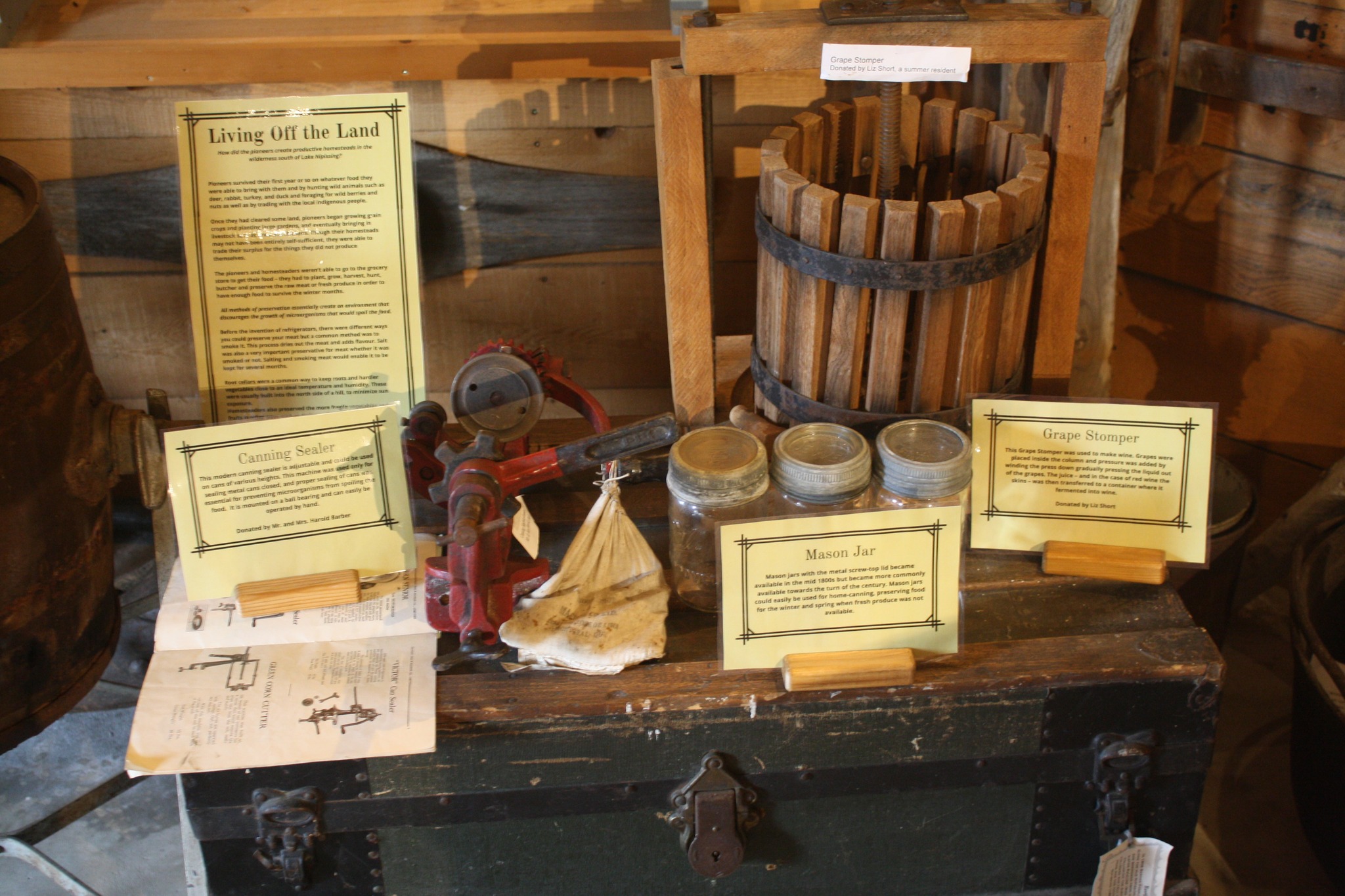
The travel west was a hard one. The weather was an obstacle, but so too was the lack of roads. John opted to guide his sleigh over frozen waterways, since they were flat and free of obstruction. The decision, made with expediency in mind, almost led to tragedy.
While crossing the frozen expanse of Lake Nipissing, the horses broke through the ice. Thinking quickly, Elizabeth flung the basket holding her baby further out onto the ice away from the break. After ensuring her elder child was free of danger as well, Elizabeth returned to John’s side and worked alongside him, on ice groaning and creaking ominously, to rescue their horses.
Thankfully, the journey ended without further incident.
“There are many stories relating to Elizabeth Beatty and her courage, but this is the most well- known,” says Bernas. “I am not sure how accurate the story is or whether this truly is the same basket as in the story, but the fact that this story and this basket have been preserved and handed down through so many generations serve to illustrate the resilience and determination of the settlers that came to Nipissing in the late 1800s and the respect that our community has for local history.”
Circle Your Calendar: Events at the Nipissing Township Museum
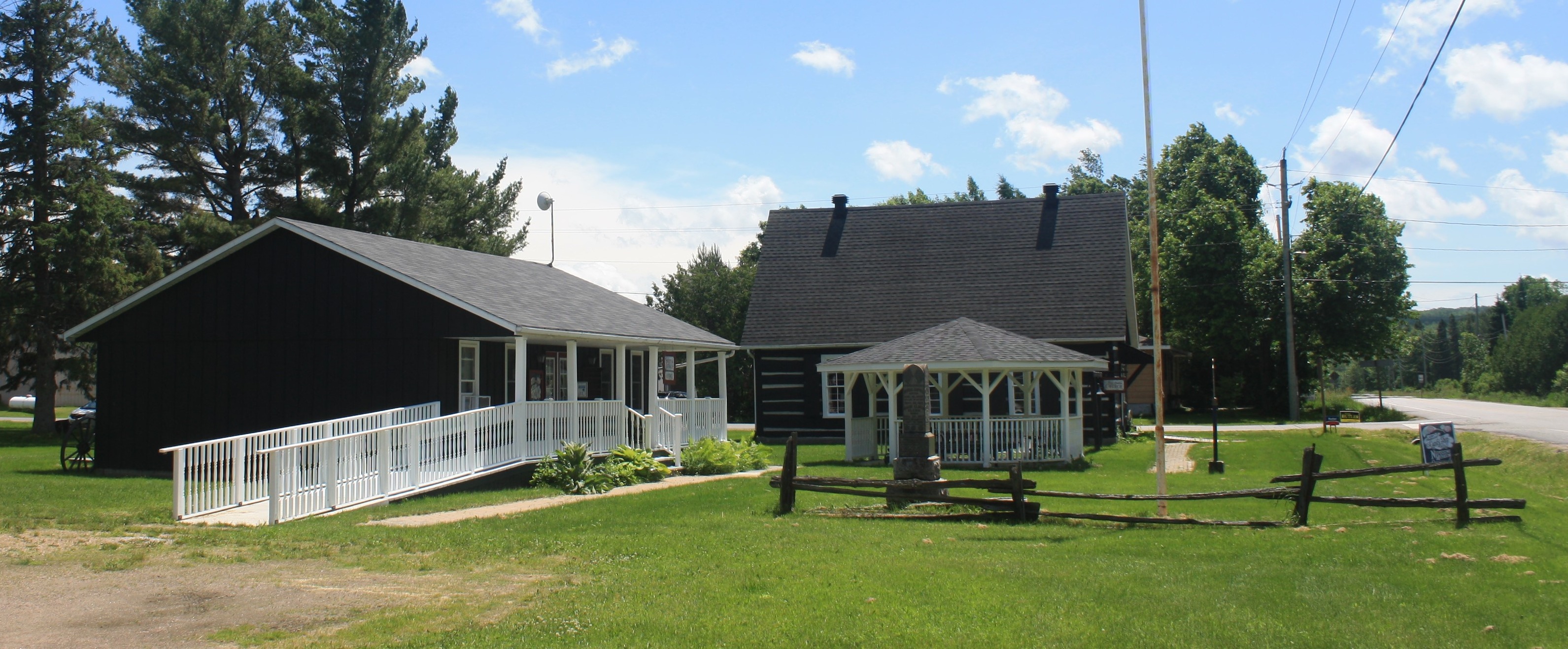
The Nipissing Township Museum plays host to a pair of special events throughout its operating season.
Heritage Day (August 18, 2024) is a family-friendly summer festival that includes a BBQ, live music, demonstrations of historic crafts and skills, and children’s activities. With this year being the museum’s 50th anniversary, an extra special day is in the works.
Fall Fest and Market (September 14, 2024) is an opportunity to browse the handiwork of local crafters and artisans and the wares of area businesses. The event has a festive flair with live music and family activities.
Further details on these events are posted as they are finalized on the Township of Nipissing’s Facebook page and its website: Museum Nipissing Township.
Just the Facts
Where is the Nipissing Township Museum Located?
Location: 4363 Highway 654
What are the Operating Hours of the Nipissing Township Museum?
Operating Season: 10 a.m. until 4:30p.m, Wednesday – Sunday, July 3 – Sept 5
How do I Contact the Nipissing Township Museum?
Phone: (705) 724-2938
Email: museum@nipissingtownship.com
Recommended Articles
The Seven's Best Hikes, Biking Trails and Lakes

7 Best Spots to Check Out in The Seven

Budget Bliss: Explore Northeastern Ontario Without Breaking the Bank

Bring Your Fam!

Time to Unwind: 6 Spa Havens to Discover In The Seven
5 Amazing Places to SUP in Northeastern Ontario

5 Amazing Bike Rides to Discover

Northern Lights in Northeastern Ontario

Northeastern Ontario's Best Pride Festivals

Fish for one of the World's Rarest Species of Trout

An Insider's Guide to Manitoulin Island

6 Small-Town Gems to Explore in Northeastern Ontario

11 Best Things to Do in Kapuskasing, Ontario



